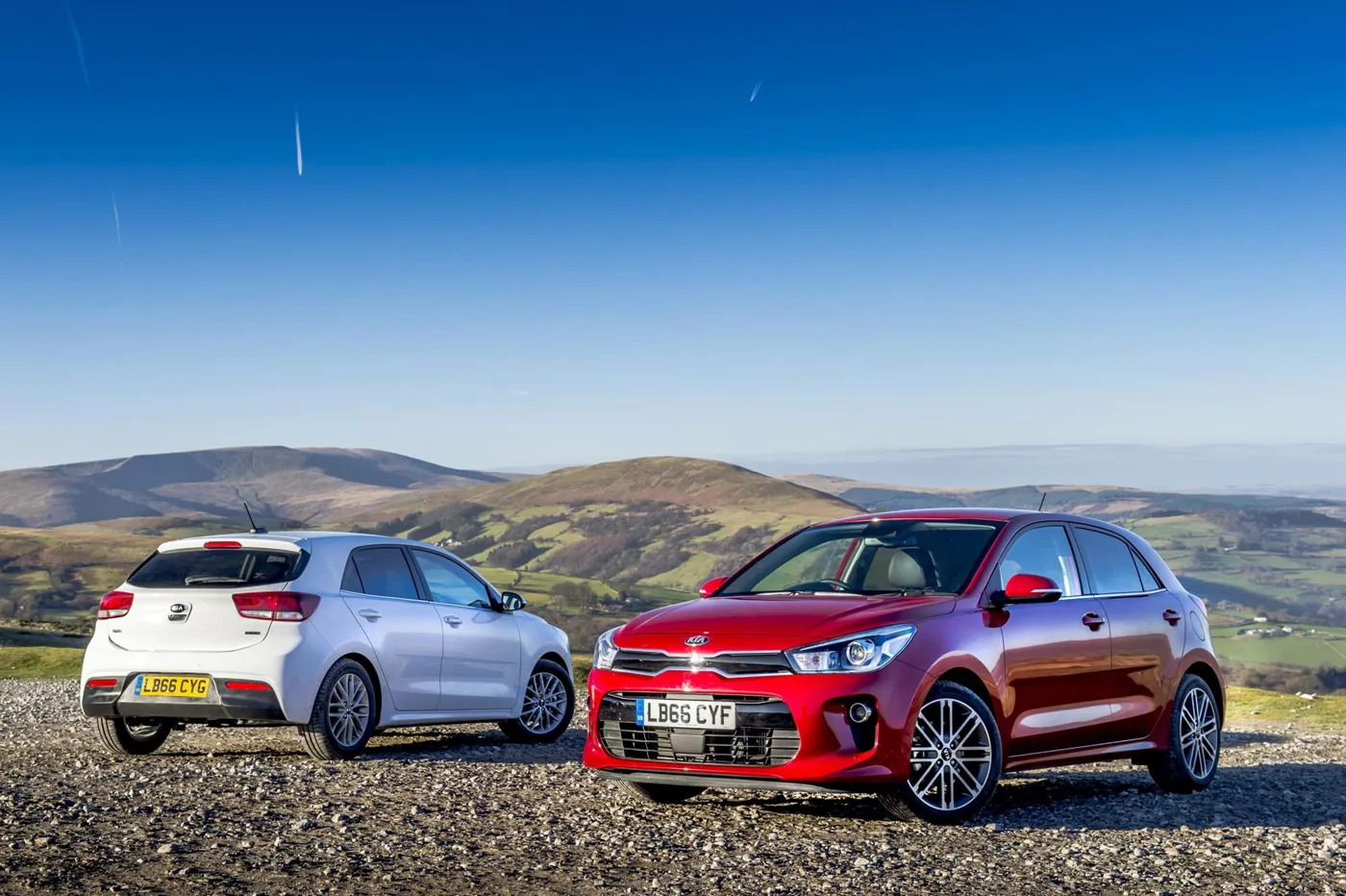The fourth-generation Kia Rio is now on sale, priced from £11,995.
The manufacturer says key changes include new engines, improved fuel efficiency and emissions, more space and the introduction of connected car and safety systems.
The Rio will now be sold as a five-door model only. There are 10 versions in three trim grades – badged 1, 2 and 3 – with a limited-run First Edition model.
Trim level 1 is fitted as standard with air conditioning, front electric windows with an automatic function on the driver's side, remote locking, electrically adjustable heated door mirrors, a 3.8-inch display screen, Bluetooth, automatic light control, bi-function projection headlamps and cornering lights and LED daytime running lights.
There are body-coloured bumpers, door mirror casings and door handles, steering wheel-mounted audio controls and 60:40 split rear seats.
A four-speaker audio system is standard, while safety provisions include Electronic Stability Control (ESC), Vehicle Stability Management (VSM) and Hill-start Assist Control (HAC).
Grade 2, priced from £13,745, supplements all this with 15-inch alloy wheels, a leather-trimmed steering wheel and gearshifter, electric windows at the rear as well as the front, electric folding mirrors with LED indicator lights, a digital DAB radio, a 5-inch colour display screen, a six-speaker audio system, a reversing camera and rear parking sensors, a 3.5-inch premium supervision cluster, rear as well as front USB charging ports, cruise control with a speed limiter and Autonomous Emergency Braking and Lane Departure Warning systems.
There is chrome trim around the black radiator grille, premium black cloth upholstery and a centre storage box.
Additional features on Grade 3, which starts at £16,295, include 16-inch alloy wheels, automatic air conditioning with a defogging system, black faux leather upholstery, a 7-inch display screen, heated front seats and a heated steering wheel, rain-sensing front wipers, privacy glass on the rear side windows and tailgate, satellite navigation, Android Auto and Apple CarPlay connectivity and Bluetooth with voice recognition.
Finally, the First Edition version adds 17-inch alloys, a smart key entry system and engine start/stop button, stainless steel pedals, black and red faux leather upholstery and LED rear lights.
The new Rio includes Autonomous Emergency Braking as part of Kia's advanced driver assistance systems (ADAS). It also features a Lane Departure Warning system.
Both are standard from grade 2 upwards and optional with grade 1.
And, in an increasingly connected world, the Rio now offers Kia Connected Services powered by TomTom and featuring Android Auto and Apple CarPlay smartphone integration.
These are standard with grade 3 and the First Edition models.
Autonomous Emergency Braking with pedestrian recognition takes data from radar and a camera to detect sudden and potentially dangerous braking by a vehicle ahead, and activates the brakes.
At speeds between 5mph and 50mph the Rio will come to a complete stop, avoiding many potential collisions. It is also able to detect pedestrians who wander into its path and apply the brakes in the same way.
A new feature – Straight Line Stability – senses any difference in applied brake pressure between the right and left of the car and intervenes to keep it straight, while another first for the Rio, Cornering Brake Control, delivers asymmetrical brake pressure when slowing in tight curves to counter loss of traction. Both are standard across the range.
Kia Connected Services with TomTom are accessed through a 7-inch touchscreen navigation system. The information available to drivers includes live traffic updates, weather reports, speed camera locations and local point-of-interest searches.
The system is compatible with Android Auto and Apple CarPlay through a suitable smartphone.
Increased leg and shoulder room are on offer, along with increased boot capacity – up by almost 13 per cent to 325 litres – while the fuel tank is two litres larger at 45 litres.
Kia's 1.0-litre T-GDi (Turbocharged Gasoline Direct-injection) engines are offered in the Rio for the first time and head a seven-strong powertrain line-up which shows improvements in fuel efficiency and CO2 emissions over the outgoing Rio.
They join revised versions of Kia's 1.25-litre and 1.4-litre petrol engines, and two versions of the European-designed and European-built 1.4-litre CRDi turbodiesel.
The 1.0-litre T-GDi engine is available with either 99 or 118bhp, in both cases with 171Nm of torque across a wide rev band, starting at only 1,500rpm, for effortless driveability.
The lesser-powered version has fuel consumption and CO2 emissions of 62.8mpg and 102g/km, while the sparkling 118bhp version is not far behind, with 60.1mpg and 107g/km.
Both are capable of more than 50mpg in city driving.
The respective 0-60mph acceleration times are 10.3 and 9.8 seconds, and both versions have a top speed of at least 115mph.
The fuel economy champion of the new Rio range is the lesser-powered, 76bhp 1.4-litre diesel, a new option in Rio.
Both 1.4-litre diesels have a healthy 240Nm of torque and have CO2 emissions below 100g/km – 92g/km and 98g/km respectively – while fuel consumption figures are 80.7 and 74.3mpg. The 240Nm of torque is available from just 1,500rpm, giving sprightly acceleration from 0-60mph in either 13.5 or 11.6 seconds, with top speeds of more than 100mph.
The 1.25-litre petrol engine develops 83bhp and 121Nm of torque, and has fuel economy and CO2 emissions of 58.8mpg and 109g/km. This easy-going entry-level power unit is ideally suited to urban driving, but is far from out of its depth at highway speeds. It can accelerate from 0-60mph in 12.5 seconds on the way to a top speed of 107mph.
The final option is a new-to-Rio multi-point injection unit with a capacity of 1.4 litres and power and torque outputs of 98bhp and 133Nm. Economy is 56.5mpg, with CO2 emissions of 114g/km. The 0-60mph and top speed figures are 11.8 seconds and 108mph.
This engine is also available with a four-speed automatic gearbox. In this configuration, economy and CO2 emissions are 46.3mpg and 140g/km, while the performance figures are 0-60mph in 13.4 seconds and a top speed of 103mph.
All manual versions of the new Rio have Kia's Intelligent Stop & Go (ISG) engine stop-start system to eliminate tailpipe emissions and fuel consumption while stationary in traffic.














Login to comment
Comments
No comments have been made yet.